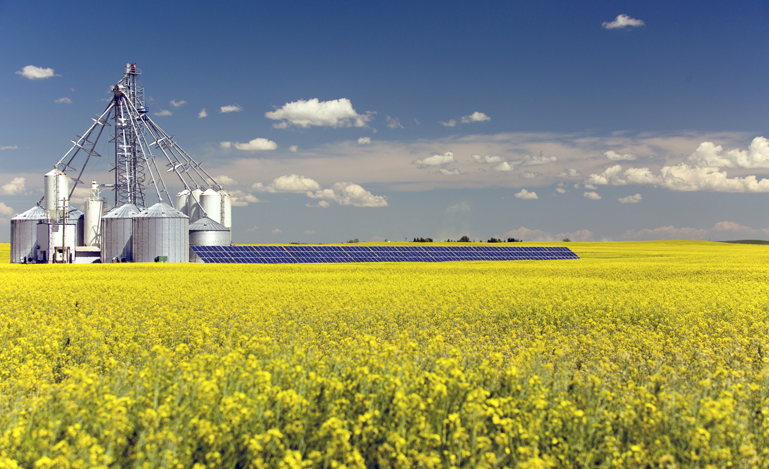Prairie resilience: A flexible plan to fight climate change
Saskatchewan is different. It needs different tools at the outset to effectively reduce greenhouse gas emissions.

Johan Runeberg is a poet and the author of one of Finland’s most famous books, “Saarijärven Paavo.” His tale is about a poor farmer, Paavo, who spent immense effort to grow crops while struggling and suffering much from a harsh climate —something many farmers in Saskatchewan can relate to. But that perseverance against all odds (or “sisu” in Finnish) is not to be pitied, but respected. It’s a shared value between Finns and Saskatchewan people - whether that means defending one’s homeland or creating a home in a vast new land.
“Sisu” underpins the rationale for the government of Saskatchewan’s climate strategy, branded as “Prairie Resilience” and introduced in December 2018. By providing various options to reduce GHG emissions, Prairie Resilience was drafted to comply with federal carbon-pricing requirements while still maintaining flexibility for industry and business in the province.
Carbon-intensive agriculture is a big part of that business, with Saskatchewan accounting for 46.8 per cent of total crop area in Canada – more than Alberta and Manitoba combined and shadowing over Quebec’s 3.5per cent share. The next largest industries in the province are mining and oil & gas – both also carbon intensive.
What’s more, the harsh winter mid-continental climate means that more energy is required to heat homes and businesses in Saskatchewan than other parts of Canada. The population is also sparsely dispersed throughout the province requiring lengthy commutes to connect the people and communities. Because of its small population and large (and growing) carbon-intensive industries, Saskatchewan faces unique challenges related to climate change and a different approach may be necessary to achieve the goal of reducing GHGs.
Prairie Resilience provides many different compliance options for industrial emitters to reduce their GHG emissions.
The first may be to use the offset system that creates additional value for actions that result in carbon sequestration or reduced emissions. There are opportunities for others to create, verify and sell offsets to emitters in order to comply. If offsets are not available, they may consider instead paying into the provincial technology fund as a compliance mechanism to further boost investment in transformative technologies and innovation. Emitters may also wish to invest in technology to make improvements to their facilities to reduce GHG emissions. For more diversified businesses with connections to other emitters, using best performance credits may make the most sense. Innovative emitters may look to use internationally transferred mitigation outcomes to reduce GHG emission.
Prairie Resilience also proposes additional mechanisms to combat climate change, including:
- a climate resilience measurement framework with annual reporting regulations
- a methane action plan to reduce emissions from venting and flaring activities in the upstream oil and gas industry
- Possible expansion of carbon capture use and storage
- Requiring climate-related financial disclosures by publically-traded companies based in Saskatchewan, and
- Generating 50 per cent of electricity capacity from renewable energy resources including wind and solar by 2030.
The government of Saskatchewan through the provincial utility SaskPower, is actively reducing emissions through renewable energy initiatives. In 2015, SaskPower set a target of transitioning 50 per cent of the province’s power to renewable energy by 2030, doubling the percentage of electricity capacity from renewable energy sources. This move to reduce emissions through independent power producers (IPP) renewable energy projects will continue to actively reduce emissions in the province.
The expectation is that these different options and mechanisms which can be tailored to best fit each individual emitter will create a higher level of compliance in the long term while continuing to support agriculture, mining and oil and gas in the province. What is missing from Prairie Resilience is a direct levy on fuels like gasoline and diesel which the federal government is proposing. However, the output-based pricing for large industrial emitters still puts a clear and defined price on carbon, arguably, where the most significant reduction of GHGs can initially occur.
While this untraditional and less-rigid form of GHG emission reduction strategy may not work across Canada, Saskatchewan is different. There are fewer than ten large emitters in the province that have a long history of operation and close ties to the community and the government. They are generally regarded as responsible corporate citizens and even environmental stewards. These emitters and their actions are often scrutinized by the public and government and non-compliance with GHG reduction policies would disproportionately burden these organizations. Accordingly, compliance with a less-rigid strategy is a better fit in Saskatchewan.
The province has perhaps been slow to implement policies to reduce GHG emissions. Even so, having different tools available at the outset seems sensible. As it becomes clear which policies work best to achieve emission reductions, and which don’t, the options being made available to emitters will surely narrow.
Prairie Resilience is an example of that famed Finnish concept of “sisu” - a determination to succeed even when others assume inevitable failure – and time will tell if that success is possible.


